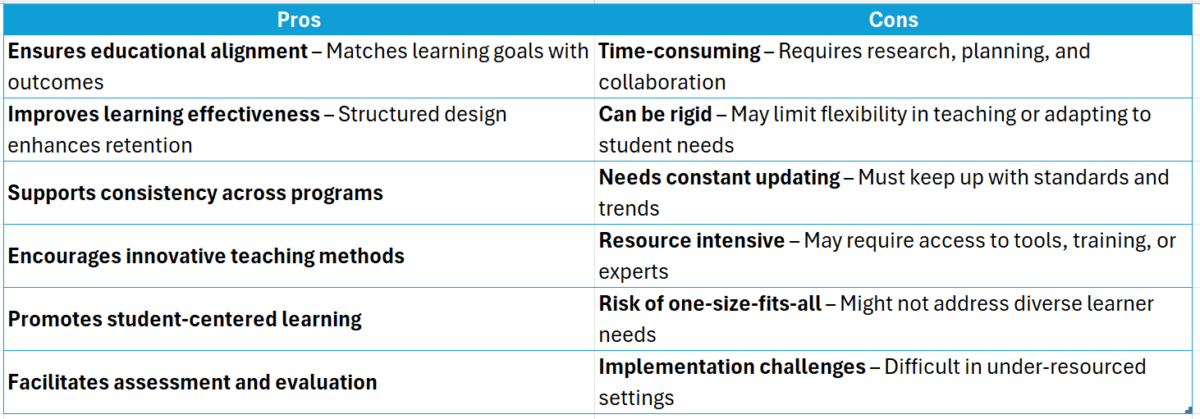
Curriculum design plays a crucial role in shaping how students learn. When done effectively, it can significantly boost learning outcomes. Imagine a classroom where every student feels engaged and challenged. That’s the power of a well-structured curriculum!
The Role of Curriculum Specialists
Curriculum specialists are like the architects of education. They create plans that cater to different learning styles. This is where differentiated education comes into play. It ensures that every student, whether they learn best through visuals or hands-on activities, can thrive in their own way.
Key Benefits of Effective Curriculum Design
- Engagement: A thoughtfully designed curriculum keeps students interested.
- Inclusivity: It addresses the needs of all learners, promoting equality in education.
- Improved Outcomes: Students are more likely to succeed when the curriculum is tailored to their needs.
In conclusion, effective curriculum design is not just about what is taught, but how it is taught. By focusing on the needs of every student, we can create a learning environment that truly enhances educational outcomes.
Unlock your potential with online degrees—Learn more!
What Makes Curriculum Design Effective?

Effective curriculum design is crucial because it shapes how students learn and grow. When done right, it can significantly boost learning outcomes. Imagine a classroom where every student feels included and engaged. That’s the power of a well-thought-out curriculum!
Clear Learning Goals
Effective curriculum design starts with clear learning goals. These goals guide both teachers and students, ensuring everyone knows what to aim for. When students understand what they need to learn, they can focus better and achieve more.
Differentiated Education
Another key aspect is differentiated education. This means tailoring lessons to meet the diverse needs of students. Not everyone learns the same way, so curriculum specialists often create varied activities. This approach helps all students, whether they need extra support or more challenging tasks.
Continuous Feedback
Lastly, effective curriculum design includes continuous feedback. Teachers can adjust their methods based on student performance. This ongoing process ensures that learning remains relevant and effective, ultimately leading to better outcomes for everyone.
The Role of Student Engagement in Curriculum Design
Effective curriculum design is crucial for boosting learning outcomes. When students are engaged, they are more likely to absorb information and develop critical thinking skills. This is why understanding the role of student engagement in curriculum design is essential for educators and curriculum specialists alike.
Why Engagement Matters
Student engagement is the heartbeat of effective curriculum design. When students feel involved, they take ownership of their learning. This leads to better retention of knowledge and improved academic performance.
Key Strategies for Engagement
- Differentiated Education: Tailoring lessons to meet diverse learning styles helps keep all students interested.
- Interactive Activities: Incorporating hands-on projects or group discussions can make learning more enjoyable.
- Real-World Connections: Relating lessons to students’ lives can spark curiosity and motivation.
By focusing on these strategies, curriculum specialists can create an environment where every student thrives. Ultimately, effective curriculum design that prioritizes engagement can significantly enhance learning outcomes.
How to Align Curriculum Design with Educational Standards
Effective curriculum design is crucial for boosting learning outcomes. When educators create a curriculum that aligns with educational standards, students are more likely to grasp concepts and succeed academically. This alignment ensures that lessons are relevant and engaging, making learning more enjoyable for everyone involved.
Understand Educational Standards
- Familiarize yourself with local and national educational standards.
- Identify key learning objectives for each grade level.
Collaborate with Curriculum Specialists
- Work with curriculum specialists to develop effective strategies.
- Incorporate feedback from teachers to ensure practicality.
Implement Differentiated Education
- Tailor lessons to meet diverse learning needs.
- Use various teaching methods to engage all students.
By aligning curriculum design with educational standards, educators can create a roadmap for success. This approach not only enhances student engagement but also fosters a deeper understanding of the material, ultimately leading to improved learning outcomes.
Can Technology Enhance Curriculum Design and Learning Outcomes?
Curriculum design is more than just a plan; it’s the backbone of effective learning. When done right, it can significantly boost learning outcomes. But how can technology play a role in this? Let’s explore how integrating tech tools can enhance curriculum design and ultimately improve student success.
The Role of Technology in Curriculum Design
Technology allows curriculum specialists to create interactive and engaging materials. With tools like educational apps and online resources, students can learn at their own pace. This is especially important for differentiated education, where each student has unique needs and learning styles.
Benefits of Effective Curriculum Design with Technology
- Personalized Learning: Technology helps tailor lessons to individual students.
- Engagement: Interactive tools keep students interested and motivated.
- Accessibility: Online resources make learning available anytime, anywhere.
Incorporating technology into curriculum design not only enhances the learning experience but also prepares students for a tech-driven world. So, can effective curriculum design boost learning outcomes? Absolutely!
Real-World Examples of Successful Curriculum Design
Effective curriculum design is crucial because it directly impacts how well students learn. When educators create a thoughtful curriculum, they can cater to different learning styles, making lessons more engaging and effective. This is where curriculum specialists come into play, crafting programs that boost learning outcomes for all students.
Real-World Examples of Successful Curriculum Design
One great example is a school that implemented differentiated education strategies. They tailored lessons to meet the needs of students at various skill levels. This approach not only improved grades but also increased student confidence and participation in class.
Key Insights from Successful Programs
- Engagement: Students were more interested in subjects when lessons were designed around their interests.
- Collaboration: Teachers worked together to create a cohesive curriculum that supported each other’s goals.
- Feedback: Regular assessments helped refine the curriculum, ensuring it met students’ needs effectively.
These examples show that effective curriculum design can truly boost learning outcomes, making education a more rewarding experience for everyone.
Unlock your potential with online degrees—Learn more!
Measuring the Success of Curriculum Design Initiatives
Effective curriculum design focuses not only on what students learn but also on how they learn. A well-structured curriculum can significantly enhance learning outcomes, making education more engaging. Curriculum specialists play a crucial role in developing programs that address diverse learning needs.
Key Indicators of Success
- Student Engagement: A good curriculum ignites excitement for learning.
- Assessment Results: Improved test scores indicate effective design.
- Feedback from Teachers: Educators provide valuable insights on effectiveness. Differentiated education is essential, as it tailors lessons to various learning styles, ensuring all students can succeed. This approach supports struggling learners while challenging advanced students, fostering a balanced classroom environment.
Benefits of Effective Curriculum Design
- Enhanced Learning Outcomes: Students understand concepts better.
- Increased Retention: Engaging materials help with memory retention.
- Greater Teacher Satisfaction: Educators feel more prepared to teach effectively.
Steps to Evaluate Curriculum Success
- Collect Data: Use tests and surveys for information.
- Analyze Results: Identify trends in performance.
- Adjust Accordingly: Modify based on feedback and data.
In conclusion, effective curriculum design is vital for improving learning outcomes, creating a dynamic educational environment for all.
How CollegeAndTuition.com Supports Innovative Curriculum Design
Effective curriculum design is crucial for enhancing learning outcomes. When students engage with well-structured content, they grasp concepts better and retain information longer. This is why understanding how innovative curriculum design can transform education is essential for teachers, students, and parents alike.
Tailored Learning Experiences
At CollegeAndTuition.com, we believe in the power of differentiated education. Our curriculum specialists work tirelessly to create materials that cater to diverse learning styles. This means every student, whether they learn best through visuals, hands-on activities, or reading, can thrive in their educational journey.
Benefits of Innovative Curriculum Design
- Engagement: Students are more likely to participate when lessons are relevant and interesting.
- Understanding: Tailored content helps clarify complex topics, making them easier to grasp.
- Achievement: With effective curriculum design, students often see improved grades and test scores, boosting their confidence.
Future Trends in Curriculum Design and Their Potential Impact
Effective curriculum design is crucial for enhancing learning outcomes. When educators thoughtfully create their curriculum, they can cater to diverse learning styles and needs. This is where the magic happens—students become more engaged and motivated, leading to better academic performance. So, how can we harness this potential?
Embracing Differentiated Education
Differentiated education is a key trend in curriculum design. It allows teachers to tailor lessons to meet the unique needs of each student. By using various teaching methods, such as group work and hands-on activities, educators can ensure that every learner feels included and supported.
The Role of Curriculum Specialists
Curriculum specialists play a vital role in this process. They analyze student data and help design programs that boost learning outcomes. Their expertise ensures that the curriculum remains relevant and effective, adapting to the ever-changing educational landscape.
Key Benefits of Effective Curriculum Design
- Improved Engagement: Students are more likely to participate when lessons are tailored to their interests.
- Higher Achievement: Customized learning paths can lead to better grades and understanding.
- Lifelong Skills: A well-designed curriculum prepares students for future challenges, equipping them with essential skills.
Unlock your potential with online degrees—Learn more!
FAQs
1. What is curriculum design?
Curriculum design is the process of planning and organizing the content, structure, and delivery of educational programs or courses.
2. Why is curriculum design important?
It ensures that learning objectives align with teaching methods and assessments, providing a clear path for student learning and development.
3. What are the main types of curriculum design?
The three main types are subject-centered, learner-centered, and problem-centered design.
4. Who is involved in curriculum design?
Typically, teachers, instructional designers, school administrators, and subject matter experts collaborate in the process.
5. What are the key components of a curriculum?
Common elements include learning objectives, content, teaching strategies, materials, and assessment methods.
6. How often should a curriculum be updated?
Curricula should be reviewed regularly—often every few years—to stay aligned with new standards, technologies, and student needs.






